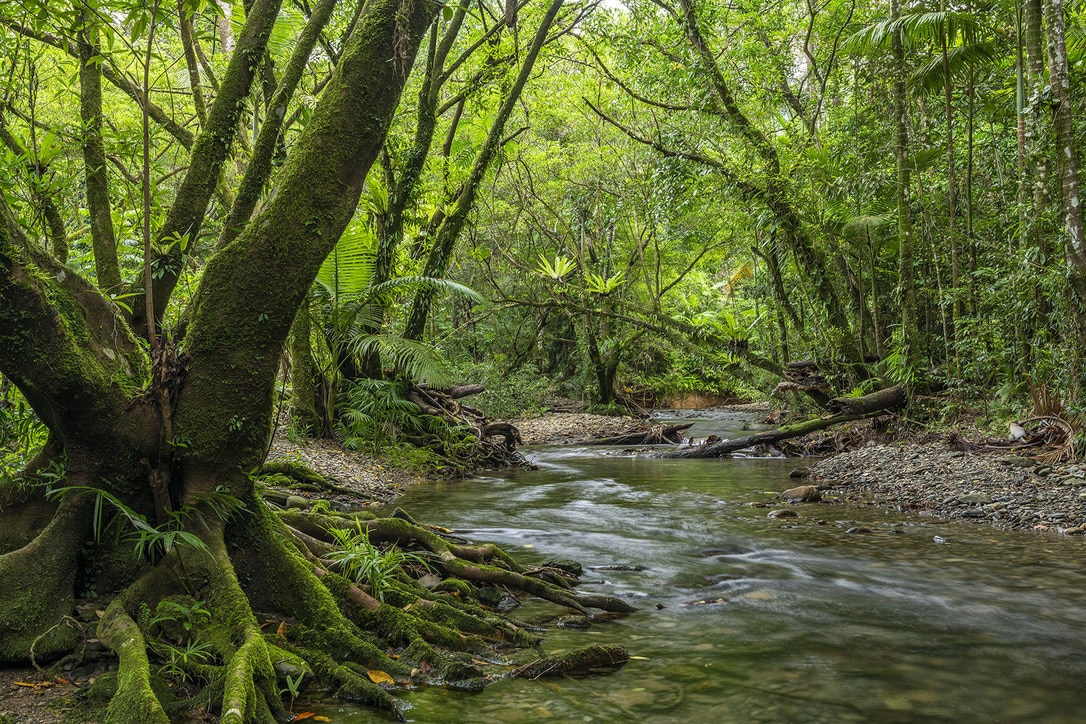Nature Impact Collective members recently gathered for an informative morning with leaders of the organisations we funded in 2024, speaking to the work they do around the theme of Inland Waters. It was an opportunity to understand their current challenges and opportunities and to gain insight into what difference, if any, untied funding meant for them.
Despite spanning the nation geographically and taking diverse approaches – from advocacy and legal justice to grassroots restoration and conservation – many shared sentiments surfaced. Each leader told the story of the resilient and savvy organisations they are steering, and the powerful contribution flexible philanthropic funding makes.
For Jono la Nauze, Chair of the recently formed Murray Darling Conservation Alliance (MDCA), the funding came at a crucial time, enabling a small team to be established to oversee the campaign and catalyse the work of the five Conservation Councils participating in the Alliance.
“As a start up, a big injection early was game changing. NIC’s significant support, at just over 25% of our overall budget, means we have been able to flex our organisational muscles by running a targeted and effective election campaign,” said Jono. “By backing a Basin-wide Alliance of conservation councils the funding leveraged relationships to have an outsized impact on national water policy.”
All the organisations expressed the value of having access to flexible funding with no set timeframe for expenditure as it empowers them to resource strategic priorities and respond to needs as they arise. Underlying this, they highlighted the value of the relationships and trust that was being built between their organisations and Nature Impact Collective, with ongoing open and honest conversations.
Environmental Justice Australia’s (EJA) approach directs resources to focus areas – issues where they can have the most transformative impact for their clients, based on research, partnerships, and potential for legal impact.
“A lot of our work, and many of our cases, are multi-year commitments so flexible funding means we can lean in on projects that otherwise might not go ahead,” said Nicola. “In fact we use the funding from Nature Impact Collective as an example to other funders, because flexible-time and multi-year potential is crucial to us.”
One of the regions where EJA has provided assistance is the Northern Territory, where nature faces rapidly evolving threats and challenges, including the impact of cotton farming on the savannahs and free flowing rivers system. Executive Director of the Environment Centre NT (ECNT) Kirsty Howe, agrees that flexible funding, and in particular multi-year untied funds, and anything that simplified the funding process, was always preferred.
“Having untied funding means we can be highly agile in our operations,” said Kirsty . “We had been working on achieving Four Corners coverage of NT Government water mismanagement for a long time and then suddenly it was happening. Fortunately we had the resources to quickly mobilise people and communities to be involved in a concentrated period of remote work, and to give them an audience on a national platform. It was quite transformational for us.”
A current focus for ECNT is in strengthening relationships,and building stronger alliances across Northern Australia to increase impact beyond local jurisdictions and raise awareness in Canberra, including through the development of the new Northern Australian Conservation Alliance.
Country Needs People’s CEO Paddy O’Leary and Chair Denis Rose emphasised the importance of upholding self-determination and maintaining independence. “While diversifying funding sources can be challenging, our advocacy work is most effective when we are not reliant on government funding and so we look to philanthropic foundations and individual donors for support,” said Paddy.
“When NIC funding came through, it was transformative at the time,” said Paddy. “It allowed us to employ a great person, joining the team supporting our Indigenous partner groups across Australia and strengthening Indigenous land and sea management.”
Another organisation mobilising nature restoration and protection across many communities, is Nature Glenelg Trust (NGT), who have restored more than 80 wetlands and created 10 reserves in South Eastern Victoria over the past 13 years. “As an organisation with a strong focus on grassroots action and making a difference on-ground, we recognise the importance of securing funding which can be used to meet critical organisational needs,” said NGT founder and Managing Director Mark Bachmann.
“When we heard the news that Nature Impact Collective was gifting us $270,000 in untied funding, it couldn’t have come at a better time,” said Mark. “Over the years, the work we were doing had grown quickly in complexity, and was rapidly outgrowing the systems we had in place to manage our projects efficiently.”
Nature Impact Collective members appreciated the positive feedback and endorsement of our funding approach with key words such as “agile, responsive, transformational” much repeated. Unfortunately, the leaders also expressed ongoing difficulty in attracting funding for “nature” in general, reinforcing our commitment and the need for broader support from philanthropy.
Nature Impact Collective is happy to link up philanthropic funders with the leaders of the organisations we support. If you are interested, please reach out to our CEO Esther Abram at [email protected]
Find our more about their work:
Country Needs People
Environment Centre Northern Territory
Environmental Justice Australia
Murray-Darling Conservation Alliance
Nature Glenelg Trust
